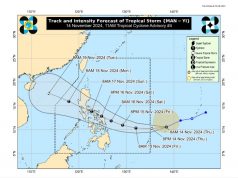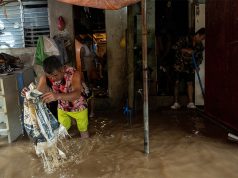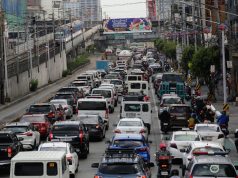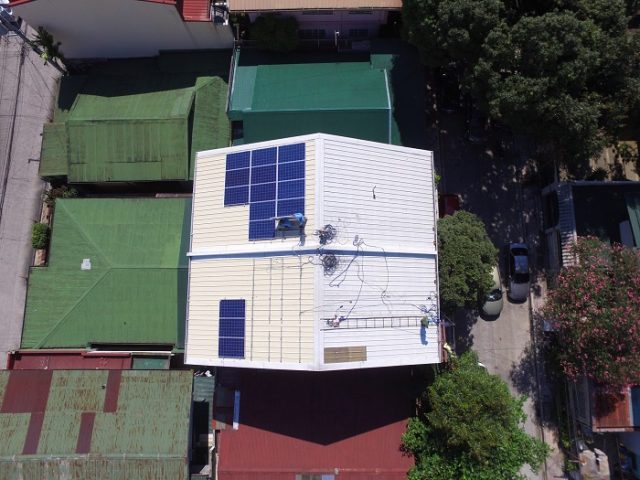
If every viable rooftop in Metro Manila were fitted with solar panels, the megacity would be able to generate the same amount of energy a power plant that runs on “dirty” energy such as coal and natural gas produces, says the Institute for Climate and Sustainable Cities, a climate policy group.
The ICSC estimates that Metro Manila’s rooftop area of 2,500 hectares can harvest up to 2.5 gigawatt peak (GWp) of solar power during the time of the day or year when sunlight is most intense. This is the equivalent amount of electricity a 500 megawatt coal-fired plant produces.
Dependence on coal
The Philippines enjoys a substantial amount of sunshine, making it a force for a solar power revolution. However, according to the Department of Energy, the country still relies largely on non-renewable energy sources, particularly coal.
Last year, coal was the primary source of energy in the country, generating more than 43,000 GWH (gigawatts per hour), or 48 percent of the total energy mix.
Meanwhile, only 24 percent of the total energy mix comes from renewable energy, mostly from hydropower and geothermal sources. Solar and wind power are only recently making an impact — contributing only 2 percent to the country’s total energy mix last year.

Renato Redentor Constantino, executive director of the ICSC, says the government must work harder to harness the country’s solar power potential. With the ample amount of sunlight it enjoys throughout the year, the country could pivot to cleaner, more sustainable and cheaper energy, he says as he pointed out that other countries with less sun radiation are leading the way in solar generated power.
The German model
Germany has been leading the market in terms of individual households looking to generate their own power through photovoltaic (PV) systems. PV systems are energy systems that typically use solar panels to harness light and convert it into electricity.
Individual households produce nearly half of solar energy in Germany, the ICSC says.
In 2016, 1.58 million PV systems — from small rooftop systems to large solar parks — were installed in Germany. These PV systems had a capacity of 41 GWH, which covered 7.4 percent of Germany’s total electricity consumption.
There is also strong support among German citizens for renewable energy, says a survey commissioned by the Renewable Energies Agency. Those surveyed ranked the expansion of renewable energy in the country as “very important,” the survey says.
Net metering: a paradigm shift
In the Philippines, private PV systems have only recently gained popularity through the net metering system, following the implementation of the Renewable Energy Act of 2008.
Net metering is a system in which private households and establishments can produce energy through renewable energy systems — mostly through solar panels — and sell back the excess power generated, thus lowering electricity bills.
The system has paved the way for a shift from the traditional generation-transmission-distribution scheme towards individual and on-site power generation, the DOE says.
In 2016, Meralco — the country’s largest energy distribution company — reported that only 392 customers in Metro Manila had installed the net metering system. Meralco says these customers saw a reduction of five to 15 percent in their electricity bills.
But while installing solar panels and using net metering may lower electricity costs for households, these systems can be a hefty investment for average households.
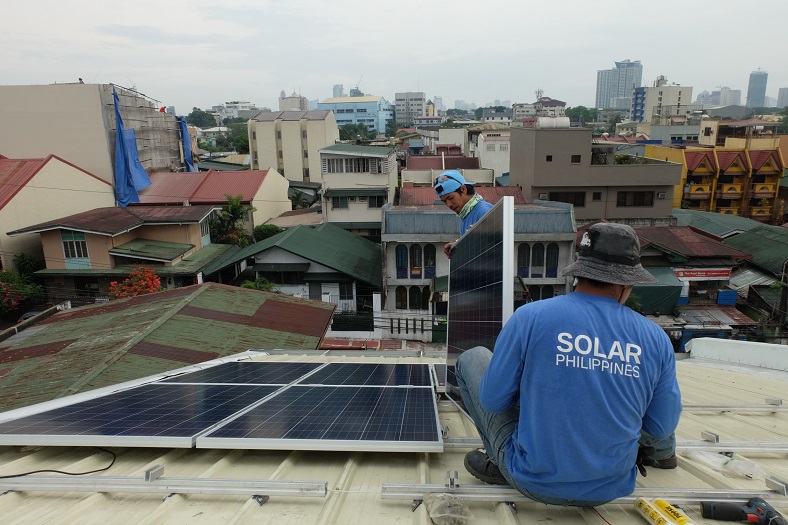
High investment for households
“It is cheap but not necessarily affordable,” Constantino says.
On average, investing on solar panels for a household may cost upwards of P400,000. The cost may vary depending on a household’s energy requirements.
Securing permits for the installation of PV systems can also be a tedious process.
Constantino, who himself had recently installed a net metering system in his house, says these documentary requirements include barangay clearance, occupancy permits and house electricity plans. It took him nearly four months to process all of his permits before he could begin installing his PV system.
“The government needs to speed up the process,” he says, adding that a policy shift in the energy sector must also be pushed.
‘Climate finance is key’
In an email interview, Antonio Gabriel La Viña, former environment secretary and climate negotiator, says climate finance is key to the transition to renewable energy.
Climate finance refers to funds from public and private sources geared toward infrastructure and program investments committed to reducing carbon emissions and helping communities adapt to the impacts of climate change.
Under the United Nations Framework Convention on Climate Change (UNFCC), developed countries will provide financial assistance to developing countries, which bear the harshest impacts of climate change.
More jobs in solar energy
New investment opportunities in renewable energy benefit not just the environment but also the economy.
Investing in renewable energy has created more jobs. In 2015, employment in the renewable energy sector reached 8.1 million, the International Renewable Energy Agency says. Jobs in the solar sector now outnumber jobs in coal mining, oil and gas industries put together, the agency adds.
‘Disruption’ in the energy sector
Constantino predicts that as solar panel prices go down in the coming years, a disruptive element in the energy sector is forthcoming.
According to Constantino, commercial accessibility of home battery systems will change the landscape of the energy sector, as this could bridge the gap from complying partially with solar power to full dependence on PV systems.
Transforming the energy system
Senator Loren Legarda, chair of the senate committees on climate change and finance, announced in May this year that the country would be tapping the Green Climate Fund (GCF — a fund established by parties to the UNFCCC. Former environment chief Gina Lopez said last year that the country may access $3 million from the GCF to fund government-accredited climate adaptation projects.
“If we are serious in transforming our energy system, there are many sources that we can tap to help us finance the transition,” La Viña says.
La Viña believes the government can use the GCF funds to finance solar power projects in the country.
Shifting to renewable energy will not only help in mitigating the country’s carbon emissions but also have better health impacts for our people than our current dependence on fossil fuels, he adds.






